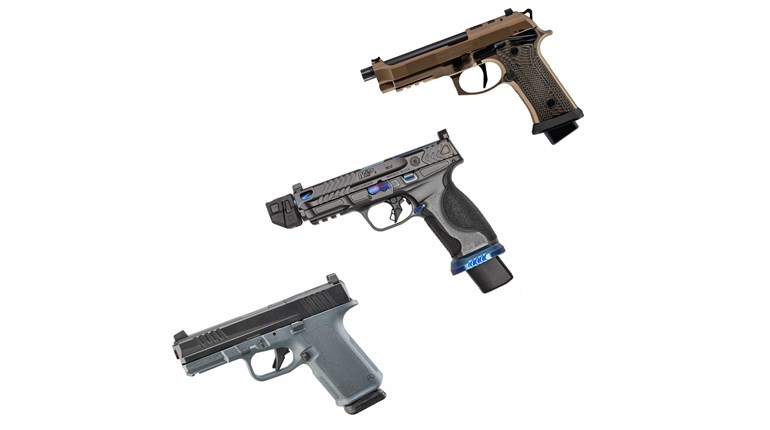
I have a Remington R1 1911 chambered in .45 ACP. Arthritis has invaded my hands and it’s getting harder for me to rack the slide. Would putting a lighter recoil spring in it be a bad idea? The factory recoil spring is 16 pounds. I bought a 12-pound spring for it, just to see if it solved my racking problem, and it did. I haven’t shot it yet, and I would like to get a knowledgeable opinion on it before doing so. The only thing I have been told so far about putting the lighter spring in it is that the recoil would be increased. I’m not as worried about that as I am about risking unnecessary damage to my pistol. While I’m sure other shooters have this same difficulty, I don’t know anyone in my area who does. Any insight and/or suggestions regarding how to tackle this challenge would be greatly appreciated.
Larry Jones, via e-mail
Age certainly has its issues, but at least you are still shooting and having fun. I have a few solutions that have worked previously in similar situations that should keep you comfortably shooting your R1 for some time to come.
There are several things to consider in reference to shooting your pistol without too much risk of damage.
While the recoil spring helps to attenuate recoil of the pistol, its main job is to return the slide forward, which strips the next round off the magazine and fully closes the pistol with the barrel and slide locked together, ready to fire the next shot.
The first thing I would do to aid in the function of the gun and help to prevent impact damage of the internal parts is to add a Wilson Combat Shok-Buff, or equivalent, to the recoil-spring guide for the lighter recoil spring to rest against. The Shok-Buff is a polymer shock absorber designed to help prevent slide and frame battering as they transition through the cycle of operation.
The next thing would be to buy or load some low-recoil ammunition that will consistently cycle in the gun. Standard-velocity ammunition with 185- or 200-grain bullets should serve you well for general application and defensive use. For target practice and to minimize wear on the pistol, but still have it cycle properly, match-grade wadcutter ammunition would be my choice—provided it will feed reliably in your 1911.
It is likely that target ammunition will reliably feed in your gun, since R1 pistols are advertised as having match-grade barrels. You may have to try a few different brands to fully validate the Remington’s reliability with the lower-recoil ammunition.
Keep in mind the recoil spring and Shok-Buff are being worked hard with the lower-power rating of the spring and should be replaced at 500-round intervals or when obvious signs of wear are evident. The Shok-Buff will start to lose its shape and the recoil-spring length will shorten by several coils, indicating it’s time to replace them.
Another upside of managing recoil to preserve the pistol is that it will help preserve your hands and keep you shooting well into the future.




































